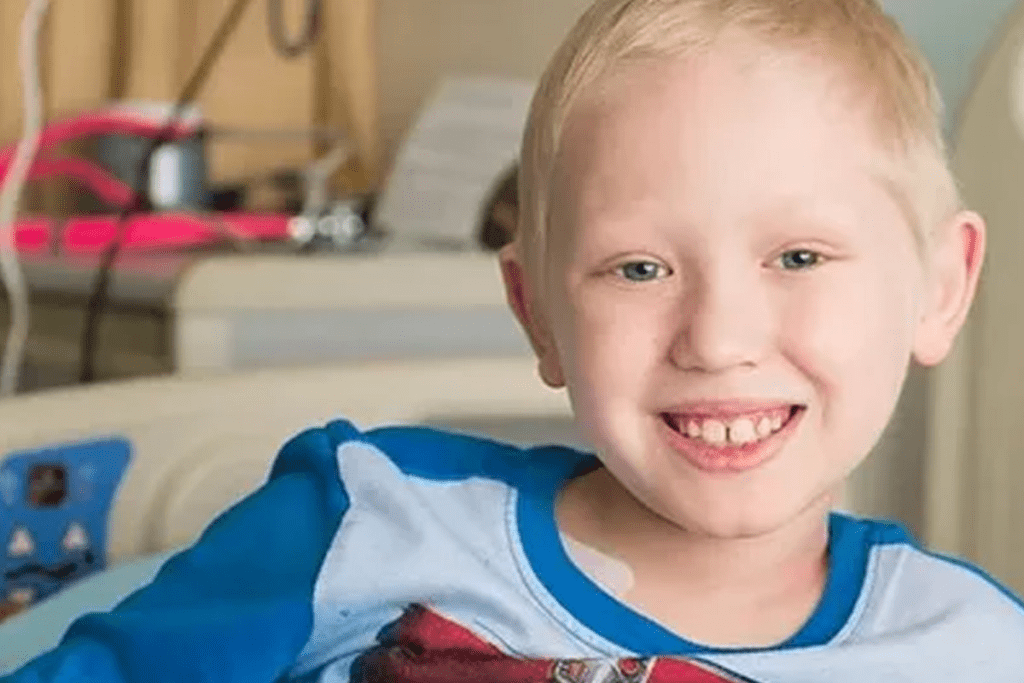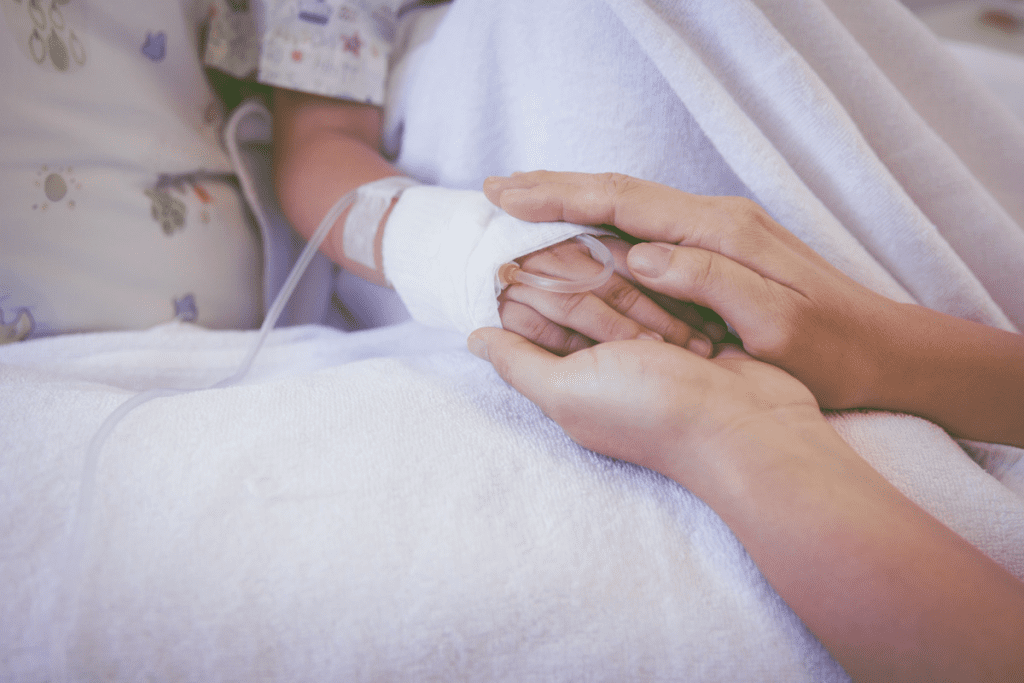Last Updated on October 20, 2025 by
Chemotherapy has changed how we treat childhood cancer, making it much more effective. About 85% of children with cancer now live five years or more after diagnosis. This is thanks to better treatments for kids with cancer.

But, these treatments can also affect a child’s growth and development. Research shows that chemotherapy can harm a child’s brain and overall health. It’s important to know how long is later effects of cancer treatment. This helps ensure that kids not only survive but also live well after cancer.
Childhood cancer treatment is a careful mix. It aims to kill cancer cells while keeping the child healthy and growing. This balance is key because cancer treatments can harm a child’s body.
Treatment plans for kids with cancer depend on the type and how far it has spread. Chemotherapy is a main treatment for many cancers. It might be used alone or with radiation therapy or surgery.

Kids with cancer often get a mix of treatments. These include chemotherapy, radiation, and surgery, alone or together. For example, chemotherapy is used for many cancers in kids, like leukemias and lymphomas.
Research shows that up to one-third of survivors face big brain problems from treatment. Kids who get radiation therapy to the head or spine might have hormone issues. This shows why treatment plans must be carefully made to avoid harm.
It’s vital for families and doctors to know about treatment risks. This way, they can plan a treatment that fights cancer well but also looks out for the child’s future health.
Children’s bodies are in the middle of growing, making them more at risk from chemotherapy. When kids get chemotherapy, their bodies react differently than adults. We must understand these differences to give them the right care and support.
Chemotherapy affects adults and kids in unique ways because of their different body stages. Kids’ bodies are more open to chemotherapy’s harmful effects because they are growing. This openness can cause long-term side effects, like problems with growth and development.
One big worry is how chemotherapy affects a child’s brain. Kids who get chemotherapy often have trouble remembering and paying attention. This is because chemotherapy can harm the growing brain, leading to lasting brain problems.

The impact of chemotherapy on growth and development is very different for adults and kids. While adults might face short-term side effects, kids are more likely to suffer long-term harm. This harm can show up as slower growth, hormonal problems, or other developmental issues.
It’s key for doctors to understand these differences to create better treatments. By recognizing the special challenges kids face with chemotherapy, we can try to lessen the long-term side effects of chemo. This helps support their health and well-being.
Looking into how chemotherapy affects growing bodies, we see the question “does chemo age you” is very important. Chemotherapy can speed up aging in kids, because of its effects on their growing bodies.
Chemotherapy can affect a child’s growth and health for a long time. Kids who have chemotherapy might have problems with their height, weight, and puberty. We will look at these issues and how they might affect learning and schoolwork.
Chemotherapy can change how a child grows, affecting their height and weight. Radiation therapy, like when it targets the spine, can slow bone growth. Some chemotherapy drugs might also change how much a child weighs by affecting their appetite or how their body uses food. We need to watch these kids closely to catch any growth problems early.

Chemotherapy and radiation, like when they aim at the head or spine, can mess with hormones. This can lead to a growth hormone deficiency. Such a deficiency can really slow down a child’s growth during puberty. For more info on cancer treatment’s long-term effects,
Chemotherapy can also make it hard for kids to learn and do well in school. The treatment might hurt their brain’s ability to grow and work well. Getting help early and making school plans just for them can help these kids do their best in school.
Understanding and tackling the long-term effects of chemotherapy can help kids recover and grow well.
It’s important to know when chemotherapy side effects will happen. This helps in taking care of the long-term health of kids who have had cancer. The time it takes for these effects to show up can vary a lot.
Some side effects can happen right away, while others may show up months or years later. Kids treated for certain cancers or who received more chemotherapy are at higher risk for serious late effects. These can include second cancers and chronic health problems.
Key Factors Influencing the Timeline of Chemotherapy Side Effects:
It’s key to keep an eye on survivors of childhood cancer. They should see their doctors regularly. This helps catch any problems early.

Knowing about the long-term effects of chemotherapy helps doctors and families care for kids who have had cancer. This care improves their quality of life.
Chemotherapy can save lives but may also speed up aging. We’ll look at how chemo can lead to early aging. We’ll talk about the risks and what causes it.
Chemotherapy may lead to early aging and health issues. It can cause the premature onset of age-related conditions like osteoporosis and heart disease. This happens because chemo damages cells, causing inflammation and stress that speeds up aging.f
The age at which a person receives chemotherapy affects aging. Kids and teens may face more long-term side effects because their bodies are growing. Older adults might see more effects because their bodies are weaker and they have more health issues.
The type and dosage of chemotherapy matter a lot. Some chemo agents, like anthracyclines, carry a higher risk of lasting side effects. Taking more chemo or for longer can also lead to early aging.
Using chemotherapy with radiation therapy raises aging risks even more. Radiation can harm specific body parts, causing inflammation and damage. This can also lead to early aging.
In summary, chemotherapy can speed up aging, causing early health problems. Knowing what factors contribute to this, like age, chemo type, and radiation, is key. This knowledge helps find ways to lessen these effects.
It’s key to watch and act quickly for kids who have had chemotherapy for cancer. Regular check-ups can spot health problems early. This way, we can help them sooner.
Some kids who beat cancer might need growth hormone therapy. It helps with growth and development issues caused by chemotherapy.
Long-term check-ups are vital for kids who have had cancer. They help doctors catch health issues from chemotherapy early. This way, we can treat problems before they get worse.
By using these strategies, we can make sure kids who have had cancer stay healthy. We give them the support they need to do well.
Chemotherapy might affect a child’s growth, mainly if given early or in large doses. The impact depends on the treatment type, dosage, and the child’s health.
Side effects from chemotherapy in kids vary. They depend on the child, the cancer type, and the treatment plan. Some effects go away soon, while others can last for years.
Chemotherapy can lead to growth issues, like height and weight problems, and puberty delays. It can also cause hormonal imbalances. Some kids might struggle with learning and schoolwork.
Growth hormone therapy might help kids who had cancer and now have growth problems. It aims to support normal growth and development.
It’s important to keep up with long-term care for kids who had cancer. This includes regular doctor visits, growth tracking, and treatments like growth hormone therapy when needed.
Chemotherapy might make kids age faster, more so if they also had radiation therapy. The risk depends on their age, the treatment type and dosage, and their health.
Childhood cancer treatment can have risks, like growth issues, higher cancer risk, and early aging. To reduce these risks, careful planning, long-term care, and needed interventions are key.
Chemotherapy can impact a child’s learning and school success, more so if given early or in large amounts. Kids might face cognitive and memory problems, affecting their schoolwork.
Subscribe to our e-newsletter to stay informed about the latest innovations in the world of health and exclusive offers!